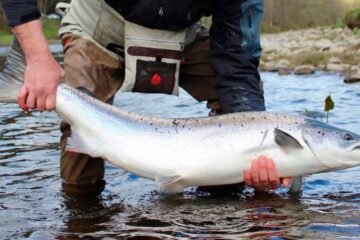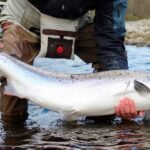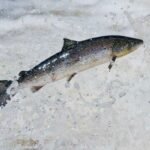The morning mist clings to the breakwaters of Johnshaven like an old cloak, and you can almost taste the salt drifting in from the North Sea. Here, in this pocket-sized Aberdeenshire village with just 664 residents, tradition breathes through every weathered stone cottage and rusty lobster pot.
For more than 300 years, Johnshaven’s harbor has sent its prized lobsters across the Channel, landing on the white-linen tables of Parisian brasseries and Michelin-starred kitchens in Barcelona and Copenhagen. Not bad for a village you could stroll across in ten minutes.
A Legacy Built on 26 Boats
Locals say it started with just a few daring men and sturdy boats. By 1722, the records show Johnshaven had grown to one of Scotland’s biggest fishing fleets — 26 boats and about 130 men. That might sound modest now, but back then it was enough to feed whole communities and earn the envy of larger ports.
Now, you’ll find maybe a handful of boats bobbing in the harbor, but the spirit hasn’t faded. A fisherman named Robbie tells me, in his thick Doric accent, that each pot they pull up keeps the village’s heart beating.

Life on Seaview Terrace
Take a walk up Seaview Terrace and you’ll see it. Oilskins drip-drying on garden gates. Nets strung up like tinsel between sheds. Each house tells a story — of fathers and sons heading out at dawn, wives waiting by the stove, radios crackling with the shipping forecast.
Some families here have been hauling lobsters for six or seven generations. That’s not nostalgia; that’s survival.
Exporting Taste: From Harbor to Haute Cuisine
So how does a lobster from Johnshaven end up on a Parisian plate? It’s more straightforward than you’d think:
-
Boats haul in the pots, usually before sunrise.
-
The catch goes into seawater tanks at the harbor — think of them as tiny hotels for crustaceans.
-
By evening, trucks whisk them away to local processors who handle the delicate paperwork, temperature checks, and logistics.
-
By the next day, they’re delivered to Europe’s top chefs.
One old timer chuckled, “Our lobsters see more of the continent than I ever did.”
The Harbor’s Hidden Stories
Behind the salt-sprayed walls of the Heritage Hub — once a lifeboat shed — you’ll find a treasure trove. Diaries, nets, old press-gang records. Did you know during the Napoleonic Wars, sailors would come here and drag local lads off to fight? Whole families were left without their breadwinners overnight.
One exhibit shows a map with tiny red dots for every boat that went missing at sea. It’s a sobering sight.
Holding Onto the Working Village Spirit
What’s remarkable is that Johnshaven didn’t sell its soul to tourism. No neon fish bars, no tacky gift shops, no busloads of weekenders snapping selfies with lobster traps.
Sure, visitors are welcome — there’s a small B&B or two, and you can grab a fish supper at the Ship Inn. But the harbor is still for work first, stories second.
This isn’t like some frozen-in-time monument. It’s living heritage — sea-to-table commerce that props up an entire community.
Small But Mighty: Johnshaven By the Numbers
| Year | Boats | Fishermen |
|---|---|---|
| 1722 | 26 | 130 |
| 2025 | 5-7 | ~20-30 |
And yet, those few boats are worth hundreds of thousands in annual export value — a whisper of the global seafood market, but everything for a village clinging to its traditions.
More Than Just Lobster
It’s not all about lobsters either. Crab, langoustine, a bit of whitefish when the weather plays nice. Locals swap recipes that date back centuries. You’ll still hear Doric dialect in the pub, and if you’re lucky, you’ll find someone to tell you where the best rock pools are.
For many, Johnshaven is just a dot on a map — a coastal wrinkle you’d miss if you blinked. For the people here, it’s the last line of defense for a way of life that’s as fragile as a lobster shell but tougher than any storm.


















